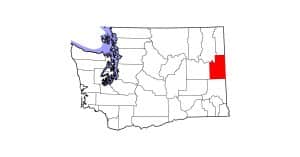Hosing Hot Horses Post-Exercise: Scrape Off Water or Reapply?

Horses working in hot and humid conditions can struggle to lower their body temperatures. Because a prolonged high body temp can lead to serious conditions such as heat stress, brain injury, and heat stroke, taking steps to help our horses cool rapidly and effectively after exercise is critical.
Commonly accepted cooling methods include applying cold water, sweat scraping, walking, and placing horses under fans or misters. Industry organizations don’t agree, however, on which technique is most effective. So Hyungsuk Kang, PhD, MS, of the University of Queensland’s School of Agriculture and Food Sciences in Gatton, and colleagues compared commonly used methods to find out. He presented their findings at the Equine Science Society’s 2021 virtual symposium.
To Scrape or Not To Scrape
At its 2019 Sports Forum, the Fédération Equestre Internationale (FEI) advised against scraping horses’ bodies after hosing with cold water because it wastes time you could be using to apply more water. The previous year, however, Racing NSW, the regulating body for Thoroughbred racing in New South Wales, Australia, recommended handlers do scrape excess water to encourage evaporation and cooling.
Due to these conflicting theories and a lack of evidence showing scraping has a cooling effect, Kang et al. set out to evaluate the efficacy of scraping after rapid cold-water application in horses post-exercise.
In its study, Kang’s team performed three cooling methods on five adult geldings—one method per week for three weeks—after treadmill exercise. Each horse exercised on the treadmill for 10 minutes followed by 10 minutes of cooldown:
- Walking for 10 minutes.
- Applying 30 liters (8 gallons) of cold (about 43 degrees F) water every minute for six minutes, then walking for four minutes.
- Or cold-water application followed by scraping every minute for six minutes, then walking for four minutes.
The horses then stood for 40 minutes. The team measured each horse’s central venous temperature (TCV) and rectal temperature (TR) before and after exercise, every minute during cooling, and every five minutes during standing.

Surprising Results
While Kang’s team hypothesized that the cooling methods would have similar effects on horses’ body temperatures post-exercise, the researchers were surprised to discover the cooling effect of applying cold water without scraping was stronger than with scraping.
Water application also had a threefold greater cooling effect on TCV than TR. This is important when deciding where to measure a horse’s body temperature during and immediately after exercise, Kang said.
“There was no cooling effect of scraping following rapid cold-water application,” he said, which indicates heat dissipation by conduction is greater than that of sweat evaporation.
Specifically, the horses’ body temperatures dropped and continued to drop 10 seconds after water application alone. When the team scraped the water from the horses’ bodies, their temperatures increased immediately.
“TCV reached normal range and stabilized after the fifth repeat of the cold-water application,” without scraping, said Kang. Based on this information, he recommended handlers continue reapplying water to hot horses every minute for the first five minutes post-exercise.
“This study demonstrates that constant contact with water is more important for heat conduction and more effective than producing and using sweat evaporation to remove heat,” Kang said. “Application of water without scraping may help decrease the core body temperature in horses more effectively in the early stage of exertional heat illness.”
Editor’s note: If you’re interested in viewing presentations from the 2021 Equine Science Society Virtual Symposium, you can register for the symposium until Aug. 2, 2021, and recordings are available for viewing until Sept. 3, 2021.

Written by:
Alexandra Beckstett
Related Articles
Stay on top of the most recent Horse Health news with












